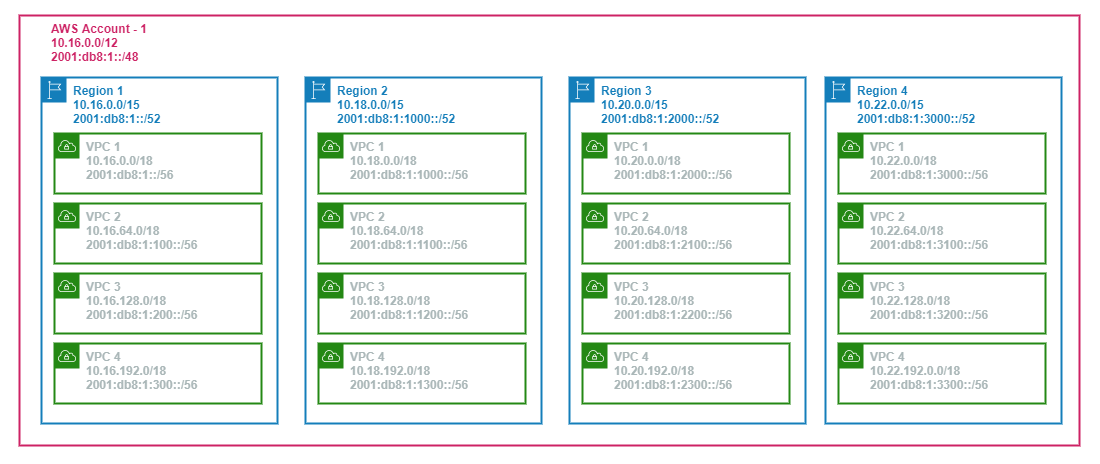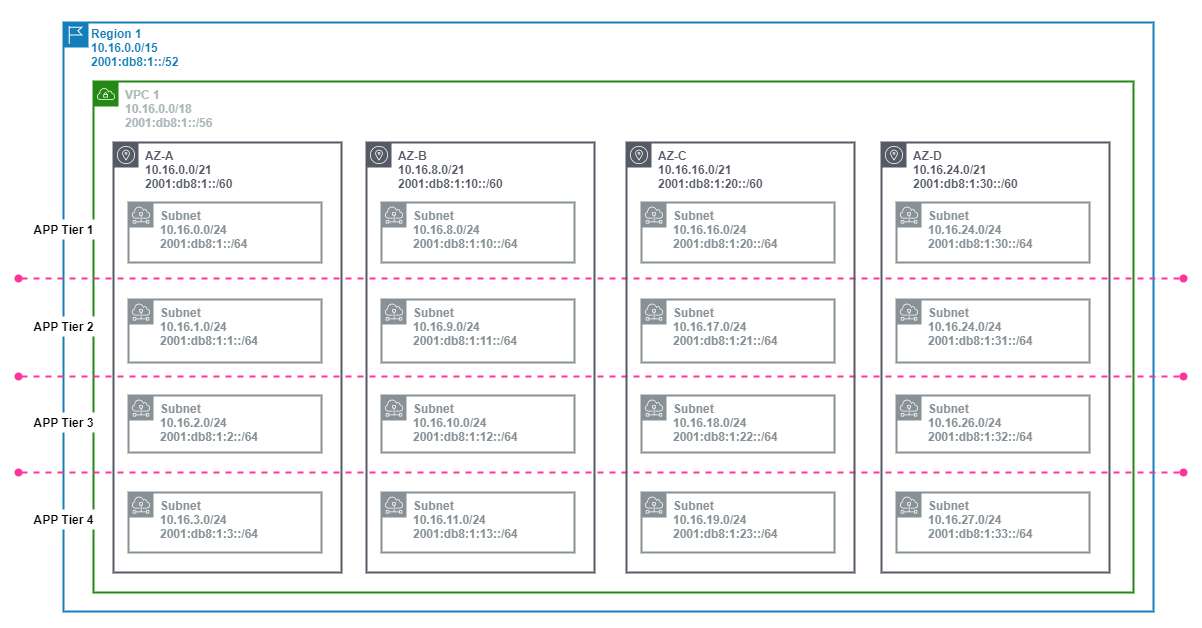AWS Subnet Plan Example
Updated: 2023-03-21
Published: 2023-02-03
Intro
I am working towards the AWS Advanced Networking Speciality certification and in the excellent course by Adrian Cantrill he goes through creating a subnetting plan for a Global AWS deployment. This inspired me to come up with my own example.
In this post, I will build an AWS subnetting plan for the Uber cloud company Stratus Labs which includes both IPv4 and BYO IPv6 addressing.
Requirements
The following high-level requirements define the current and future needs for the next 18-24 months.
- 4x AWS Accounts.
- 4x Regional Deployments.
- 4x VPCs Per Region.
- 4x Availability Zones per VPC.
- 4x Application Tiers per Availability Zone.
- Each application Tier will have no more than 200 hosts per subnet.
Supernets
To cover the IP Addressing needs, we will utilize the following blocks of IP addresses.
Accounts
We will assign a /12 for IPv4 and a /48 for IPv6 addresses in each account.
The following table lists the supernets per-account.
Regions
For each Region we will assign a /15 for IPv4 and a /52 for IPv6. This will allow us to assign a /18 and a /56 respectively to 4x VPCs Per-Region.
The following diagram shows the Supernet breakdown Per-VPC for each Region in Account 1.

The following table list the Supernet breakdown Per-VPC for each Region in Account 1.
Availability Zones
For each Availability Zone we will assign a /21 for IPv4 and a /60 for IPv6. This will allow us to assign a /24 and a /64 respectively to 4x Subnets Per-AZ.
The following diagram shows the Subnets allocated for each Availability Zone in VPC 1 in Region 1.

The following table lists the Subnets allocated for each Availability Zone in VPC 1 in Region 1.
This gives us enough available IP addresses for each subnet per application tier with plenty of breathing room for future expansion.
Outro
When making a subnet plan, there are many variables that impact how subnets are broken down. Getting it right is often a thankless task, but pays dividends down the road.
Until next time. FLY Cloud Warriors, FLY!!!